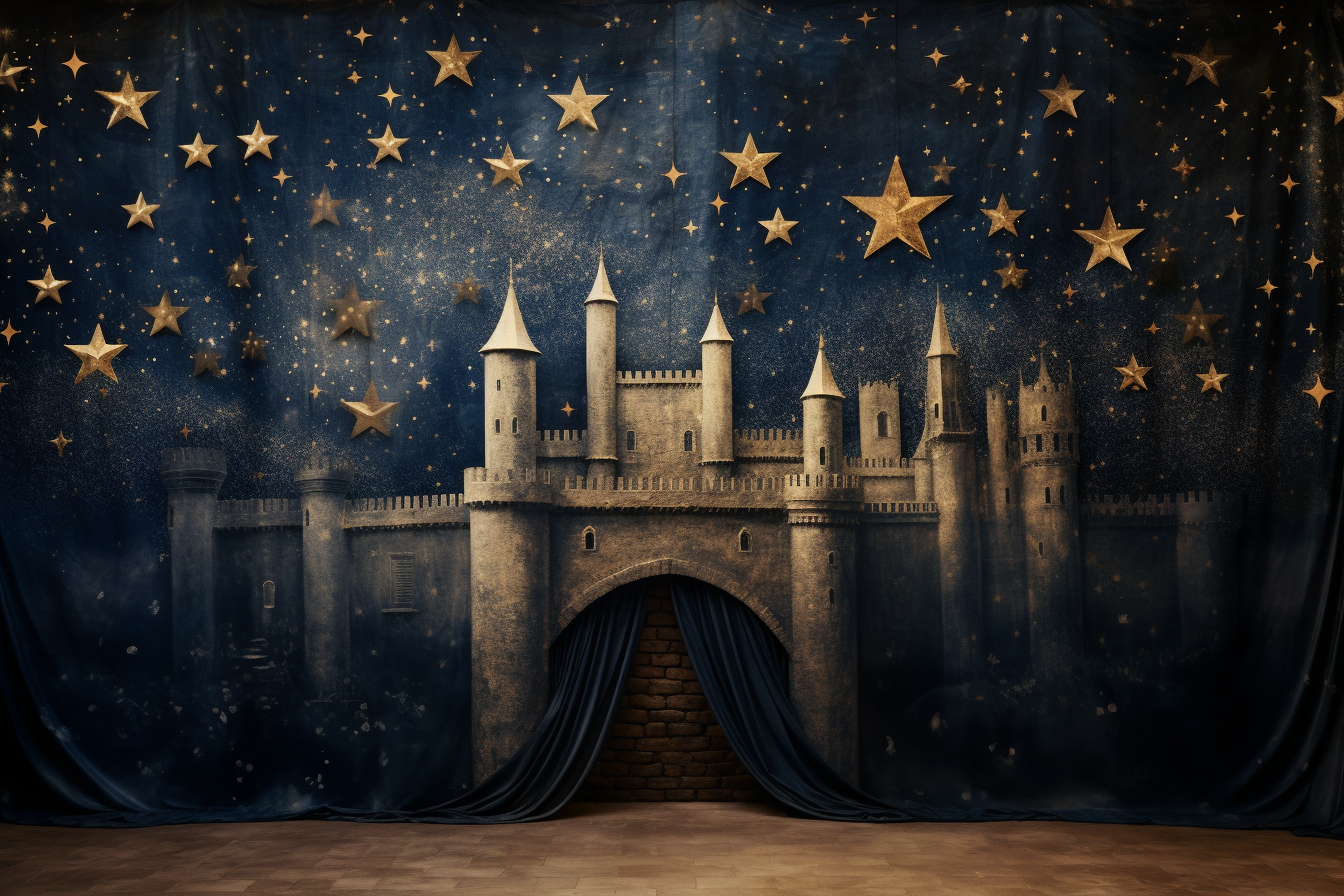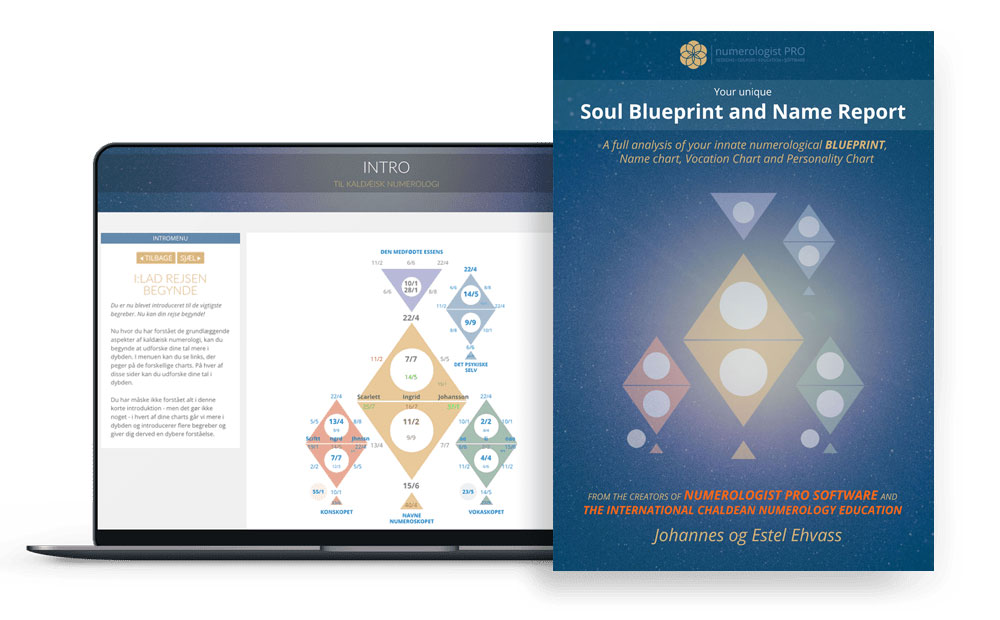Astrological Art of the Middle Ages: Illuminated Manuscripts, Cathedral Sculptures, and Tapestries

Johannes Ehvass
Welcome, dear reader! Together, we embark on a captivating journey into astrology, a timeless art and science that has accompanied humanity since its earliest days. Each astrological discovery not only mirrors the era and culture it emerged from but also feels like a celestial gift, as if the universe is directly speaking to us. Through these articles, I share with you the profound journey of how astrology has grown and evolved alongside us. Let's explore this cosmic connection that has, for millennia, enriched our understanding of ourselves and the universe around us.
Introduction

The Middle Ages, spanning roughly from the 5th to the late 15th century, was a period where art and the spiritual were deeply intertwined.
Art served as a medium to convey theological truths, moral lessons, and cosmic mysteries. Among these vast tapestries of imagery and symbolism, astrology found its place, leaving an indelible mark on medieval art.
Through illuminated manuscripts, grandiose cathedral sculptures, and intricately woven tapestries, the celestial was brought down to earth, encapsulated in forms that continue to enchant and educate.
Illuminated Manuscripts: The Celestial in Ink and Gold
The Nature of Illumination
An illuminated manuscript is a handwritten book where the text is complemented by the addition of decoration or illustration, often using gold and silver. These manuscripts were often religious texts, though not exclusively, and the art within them was not just decorative but symbolic and instructive.
Astrological Symbolism
Many illuminated manuscripts of the Middle Ages bore astrological illustrations. Zodiac signs adorned calendar pages, depicting the passage of time and the influence of the stars on earthly events. Labors of the months, frequently seen in medieval art, would often be paired with their corresponding zodiac sign, hinting at the connection between human endeavors and the cosmos.
Notable Examples
The Très Riches Heures du Duc de Berry
Description: Perhaps the most famous illuminated manuscript of the Late Middle Ages, it includes a calendar with illustrations of the labor of the months and signs of the zodiac.
Public Viewing: The manuscript is held in the collection of the Musée Condé, Chantilly, France, and can be viewed by the public there.
The Aberdeen Bestiary
Description: An illuminated manuscript from the 12th century, known for its rich illustrations of animals. Each animal is accompanied by a moral or religious interpretation, with some astrological references.
Public Viewing: Digitized and available for public viewing online through the University of Aberdeen’s website.
The Book of Hours of Catherine of Cleves
Description: A richly illustrated Book of Hours from the 15th century, it includes depictions of the zodiac signs and is known for its highly detailed and symbolic miniatures.
Public Viewing: Parts of it are held at The Morgan Library & Museum in New York and can be viewed by the public there.
The Luttrell Psalter
Description: An early 14th-century English illuminated psalter, known for its vivid and somewhat whimsical illustrations of everyday life in the medieval period, including some astrological images.
Public Viewing: Housed in the British Library, selected pages are often on display and it is also available to view online via the British Library’s Digitised Manuscripts portal.
The Limbourg Brothers’ Belles Heures du Duc de Berry
Description: Another magnificent Book of Hours that was illuminated by the Limbourg brothers for the Duke of Berry, featuring a calendar with medallions of the zodiac signs.
Public Viewing: Part of the collection at The Cloisters museum in New York, under the care of the Metropolitan Museum of Art.
The Talbot Hours
Description: An early 15th-century Book of Hours, it contains a full-page miniature for each month, showing the labors of the month and the associated zodiac sign.
Public Viewing: Occasionally on display at the British Library.
The Visconti-Sforza Tarot Cards
Description: While not a book, this collection of illuminated tarot cards from the 15th century includes astrological images and was likely used for divinatory purposes.
Public Viewing: Scattered across various collections, including the Pierpont Morgan Library in New York and the Accademia Carrara in Bergamo, Italy.
The Hours of Jeanne d’Evreux
Description: A 14th-century Book of Hours that belonged to Jeanne d’Evreux, Queen of France, containing small but exquisite illustrations, with some astrological references.
Public Viewing: Held at The Cloisters museum in New York and available for public viewing.
The Sforza Hours
Description: A late 15th-century Book of Hours, originally made for Bona Sforza, Duchess of Milan, it features lavish borders decorated with flowers, jewels, and astrological signs.
Public Viewing: Kept at the British Library and is sometimes displayed in exhibitions.
Cathedral Sculptures: Carved Constellations
A Celestial Sanctuary
Medieval cathedrals were not just places of worship but repositories of art and knowledge. The towering structures, with their soaring arches and intricate carvings, often carried astrological motifs, echoing the belief in the intricate dance between heaven and earth.
Symbolism in Stone
Many cathedrals feature zodiac motifs, usually incorporated into the decorative scheme of the building. These can be found on floor tiles, carved into choir stalls, or most prominently, on the facades and portals of the cathedrals themselves. The signs of the zodiac, often accompanied by their ruling planets, would be intricately carved, symbolizing the cosmic order and the divine plan.
Iconic Examples
Chartres Cathedral
Location: Chartres, France
Description: The Royal Portal of Chartres Cathedral is adorned with intricate carvings of zodiac signs and the labors of the months, blending the celestial with the rhythm of medieval life.
Visitor Information: The cathedral is open to visitors, and guided tours are often available to explain the rich iconography.
Amiens Cathedral
Location: Amiens, France
Description: The façade features detailed sculptures of zodiac symbols and the labors associated with each sign, a common theme in Gothic cathedrals emphasizing the link between the cosmos and human activity.
Visitor Information: Amiens Cathedral welcomes tourists and provides access to view its zodiac representations.
Notre-Dame de Paris
Location: Paris, France
Description: Prior to the tragic fire, Notre-Dame displayed zodiac signs on its astronomical clock and possibly in other less known elements, reflecting the medieval fascination with astrology.
Visitor Information: Currently under restoration, the cathedral’s reopening schedule can be checked for future visit planning.
Salisbury Cathedral
Location: Salisbury, England
Description: This cathedral houses an ancient clock that uses a zodiac dial for months, integrating timekeeping with the astrological calendar.
Visitor Information: The cathedral is open for tours, which often include a visit to the medieval clock.
Wells Cathedral
Location: Wells, England
Description: The chapter house of Wells Cathedral is noted for its ceiling, decorated with carvings of the sun and moon, evoking celestial themes.
Visitor Information: The cathedral and chapter house are accessible to visitors, with guided tours available.
Modena Cathedral
Location: Modena, Italy
Description: Its façade includes a series of bas-reliefs that depict the labors of the months and signs of the zodiac, a testament to the medieval mindset that saw the divine in the patterns of the stars.
Visitor Information: Modena Cathedral is a UNESCO World Heritage site and is open to the public.
St. Mark’s Basilica
Location: Venice, Italy
Description: This basilica features a zodiac floor mosaic and the famous clock tower with signs of the zodiac, combining religious art with celestial symbolism.
Visitor Information: St. Mark’s Basilica is one of Venice’s most visited sites, with the zodiac mosaics being a highlight for many.
Toledo Cathedral
Location: Toledo, Spain
Description: Toledo Cathedral’s exquisite 15th-century altarpiece, the Astrolabe, depicts astrological imagery, reflecting the period’s blend of sacred art and science.
Visitor Information: The cathedral is a major tourist attraction, and visitors can view the Astrolabe as part of the tour.
Freiburg Minster
Location: Freiburg, Germany
Description: This cathedral is known for its astronomical clock, which is adorned with zodiac symbols, emphasizing the importance of celestial cycles in the medieval worldview.
Visitor Information: Freiburg Minster is open to the public, and the astronomical clock is a key feature of interest.
St. Mary’s Church
Location: Lübeck, Germany
Description: While not a cathedral, St. Mary’s Church in Lübeck contains a famous astronomical clock with zodiac signs, a marvel of medieval technology and art.
Visitor Information: The church welcomes visitors, and the astronomical clock is a must-see.
Tapestries: Weaving the Heavens
Threads of Fate
Tapestries, large textile artworks displayed on walls, were a prominent art form in the Middle Ages. Apart from showcasing scenes from history, mythology, or religion, many tapestries incorporated astrological themes. These woven wonders intricately melded together threads of fate, celestial cycles, and earthly tales.
Astrological Narratives
Many medieval tapestries depicted the zodiac signs, often accompanied by the sun, moon, and notable constellations. The artistry did not stop at mere depiction; narratives would unfold showcasing the influence of these celestial bodies on human affairs, from love to war to harvests.
Exemplary Tapestries
The Lady and the Unicorn Tapestries
Location: Musée de Cluny, Paris, France
Description: This series of six tapestries from the late 15th century is often interpreted as an allegory of the senses, with the sixth tapestry representing understanding, possibly linking to a cosmic or astrological dimension.
Visitor Information: The tapestries are on display at the Musée de Cluny, which specializes in medieval art.
The Zodiac Tapestries at the Castello Sforzesco
Location: Castello Sforzesco, Milan, Italy
Description: Housed within the castle, these tapestries depict the zodiac signs surrounded by mythical figures and scenes, reflecting the astrological knowledge and symbolism of the period.
Visitor Information: The Zodiac Tapestries can be viewed by the public as part of the castle museum’s collection.
The Hunt of the Unicorn Tapestries
Location: The Cloisters, New York, USA
Description: While primarily focused on the hunt of a unicorn, this series of seven tapestries is rich with symbolic imagery, including astrological symbols that were part of the medieval worldview.
Visitor Information: The tapestries are on display at The Cloisters museum, part of the Metropolitan Museum of Art in New York.
The Planetary and Zodiac Tapestries
Location: Various collections
Description: A series of tapestries from the early 16th century that feature personifications of the planets and signs of the zodiac, illustrating the influence of celestial bodies on human affairs.
Visitor Information: These tapestries are held in different museums and private collections, with some pieces occasionally loaned out for special exhibitions.
The Astrolabes Tapestry Series
Location: Bayerisches Nationalmuseum, Munich, Germany
Description: These tapestries depict various scientific instruments, including astrolabes, and celestial charts, demonstrating the medieval fascination with astrology and the cosmos.
Visitor Information: The tapestries are part of the permanent collection at the Bayerisches Nationalmuseum.
The ‘Mazarin’ Tapestries
Location: The Louvre Museum, Paris, France
Description: Named after Cardinal Mazarin, these tapestries include astrological motifs and personifications of the zodiac, reflecting the cardinal’s interest in the subject.
Visitor Information: Pieces from this collection are periodically displayed at the Louvre Museum.
The Devonshire Hunting Tapestries
Location: Victoria and Albert Museum, London, England
Description: Among the largest and most magnificent tapestries in existence, these feature hunting scenes with borders that include astrological symbols.
Visitor Information: The tapestries are on display in the Victoria and Albert Museum’s Medieval & Renaissance galleries.
Conclusion
As we traverse the artistic landscape of the Middle Ages, the omnipresence of astrology is undeniable. From pages gleaming with gold to towering stone edifices, to tales woven in colorful threads, the celestial realm permeated medieval artistry. These art forms not only celebrated the stars but also conveyed a profound understanding of humanity’s place within the cosmos. Today, as we stand in awe of these masterpieces, we are reminded of the eternal dance between the heavens and earth, a dance that continues to inspire and mystify.

Johannes & Estel: Renowned authorities in Numerology, Astrology, and the esoteric arts. As the founders of Scandinavia's premier Numerology school, we're delighted to share our insights through this curated series on astrology. Dive in and discover the stars.
The Worlds Most Advanced Numerology Report

Your birthdate reveals your unique life purpose, potentials, talents, weaknesses, and karma in this life.
Your names show what you attract into your life regarding your career, relationships, happiness, money, and success.
GET THE REPORT HERE
Introduction to Astrology
The history of Astrology
Moving beyond deterministic astrology
Foundation of Astrology: Planets, Signs and Houses
Astrology and the Holographic Universe
The Holographic Universe
The Human Psyche as a Mirror to The Solar System
The Human Body as a Mirror to The Star Signs
Astrology Background
Egyptian Astrology
Mayan Astrology
Chinese Astrology
Indian Astrology - Jyotish
Celtic Astrology
Tibetan Astrology
Mesopotamian Astrology
Early Mesopotamian Astrology: The Dawn of Celestial Divination
Enuma Anu Enlil: The Epicenter of Babylonian Celestial Omen Interpretation
Babylonian and Chaldean Astrology
Babylonian and Chaldean Astrology
Chaldean influence and evolution
Chaldean Wisdom: Safeguarding and Transmitting Astrological Knowledge
Hellenistic Astrology
Hellenistic Astrology background
Claudius Ptolemy and Tetrabiblos
Vettius Valens
Dorotheus of Sidon
Persian Astrology
Persian Astrology background
Sassanian Astrology
Late Antiquity and The Transition Period
Late Antiquity and The Transition Period
Hellenistic to Islamic Transition: The Torchbearers of Astrological Wisdom
Islamic Golden Age
Arabian Astrology Background
Arabian Astrology Contributions
Medieval Astrology
Introduction: The Medieval Cosmos
Monastic Preservers: Astrological Knowledge in the Dark Ages
Astrology in Medieval Medicine
Kings, Queens, and Constellations: Astrology in the Medieval Court
The Church and the Stars: A Contentious Relationship
Universities and Scholastic Pursuits: Academic Astrology
Astronomy & Astrology: Tools of the Trade
Medieval Astrological Houses and the Synthesis of Traditions
Transition to the Renaissance: Humanism and the Celestial Arts
Reflections: Medieval Astrology's Echoes in Modern Practice
Astrological Art of the Middle Ages
Famous Medieval Astrologers
Medieval Astrological Texts
Renaissance Astrology
Renaissance Humanism and Astrology
Scientific Advancements and Astrology
The Social Fabric: Astrology in Everyday Renaissance Life
Court Astrologers of the Renaissance
Controversies and Conflicts: Astrology Under Scrutiny
Renaissance Texts and Authors: Continuation of a Tradition
Astrology and Art: Celestial Imagery in the Renaissance
Renaissance Astrological Practices: Evolutions and Innovations
End of the Renaissance: The Gradual Decline of Astrological Influence
Renaissance Astrology's Echo in the Modern World
Enlightenment Astrology
Introduction: The Enlightenment and Astrology
Challenging the Stars: Astrology's Critics during the Enlightenment
Astrology and the New World
Astrology in the 19th Century
The Dawn of Psychological Astrology
Astrology in the 20th Century: A Modern Renaissance
Astrological Associations and Schools
Modern Controversies and Astrology
Astrology and Popular Culture
Astrology and Technology
Current Trends and Future Directions in Astrology
Conclusion: Reflecting on Astrology's Evolution
The Planet Significances
The Sun in Astrology
The Moon in Astrology
Mercury in Astrology
Venus in Astrology
Mars in Astrology
Jupiter in Astrology
Saturn in Astrology
Uranus in Astrology
Neptune in Astrology
Pluto in Astrology
Chiron in Astrology
Black Moon Lilith in Astrology
Pars Fortuna in Astrology
Ceres in Astrology
Houses in Astrology
Introduction to Astrological Houses
The Angular Houses
The Succedent Houses
The Cadent Houses
The 1st House
The 2nd House
The 3rd House
The 4th House
The 5th House
The 6th House
The 7th House
The 8th House
The 9th House
The 10th House
The 11th House
The 12th House
Interaction Between Houses
Derived Houses, House Rulers, and Interceptions
Conclusion: Synthesizing House Knowledge
All Materials © 2023 & 2024 Numerologist PRO
Terms of Service: Information provided by Numerologist PRO and/or from this web site is not intended as advice (medical, psychological, financial or other), nor is it intended to replace your work with a qualified professional (medical or otherwise). You should maintain your relationship with your providers and consider the services of this site as informational only. Any information, stories, examples, or testimonials presented on this website do not constitute a warranty, guarantee, or prediction regarding the outcome of an individual. This web site is a sharing of knowledge and information of numerology/energy work based on the experiences of Numerologist PRO. You are encouraged to make your own decisions based on your own research and inner guidance. By booking and receiving services, you agree to fully release and hold harmless Numerologist PRO and all it's affiliated numerologists from and against any liability or claim that may arise out of or in connection with their service(s).
Numerologist PRO © 2021

CONTACT
numerologist@numerologistpro.com
LIKE US, and get free numerology tools, info about your personal numbers, best business dates of the year - and more!
YOUR FREE NUMEROSCOPE CHART
Enter your name and email below and get access to our free online numerology chart tool.